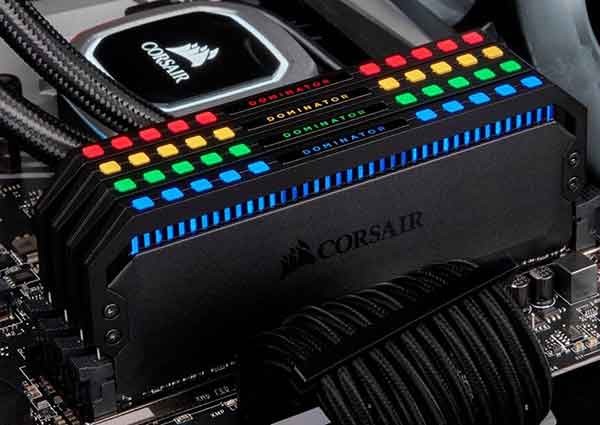How to install RAM on PC
Upgrading your PC’s RAM is one way to make your computer much more responsive. Here’s how to install RAM on PC. One of the simplest hardware upgrades you can do to make your computer more snappy is to add RAM to your PC. Over the years, operating systems like Windows, software like Photoshop, and now even web browsers like Chrome have earned a reputation for eating up memory. Older PCs, meanwhile, that run between 2GB and 4GB of memory, having too many Chrome tabs open, or having many programs open on the PC could drain all the memory the system has to offer, slowing down the PC.
If your PC slows down when you have a lot of things to do, consider increasing your PC’s RAM. 4GB may be fine if you stick to light tasks and don’t use Chrome, 8GB is the minimum we recommend for a modern desktop PC, 16GB would be TOP. Gamers with a future-proof eye may also want to consider 32GB, the downside being the increased costs, of course.
Read also: How to connect PC to TV, all methods
RAM Purchase Considerations
There are several types of RAM. Most modern PCs use DDR4 memory, but older systems may require DDR3 or even DDR2. The high-bandwidth DDR5 kits they are starting to be used by many users together to the ferocious 12th generation Intel “Alder Lake” processorsbut they are Very expensive and the CPUs still support the older standard as well. For now, DDR4 is king.
It is also important to consider the speed of the RAM you are purchasing in addition to the capacity of the memory kit. Of all the memory bandwidth tests done over the past decade, the one thing these tests have consistently shown is that there is very little benefit in buying the fastest RAM possible. Most people should look beyond the flashy 5,000 MHz kits and focus on the price / performance sweet spot: DDR4 clocked at 2,666 MHz to 3,600 MHz. Opt for a RAM kit that comes in two modules rather than single-stick or quad-channel offerings if possible.
The next issue to consider is branding. There are many memory brands available, such as Corsair, G.Skill, Kingston, KLEVV, Patriot, ADATA, Crucial, PNY, Super Talent, Mushkin, and others. The biggest difference between these brands is the design of the heat sinks on the RAM modules. Choose the memory that has the best compromise between a look you like and a price you can bear. You will find ongoing debates about the reliability of different brands, but on balance, all the big RAM manufacturers provide very good products.
Also Read: How to Transfer Photos from Android to PC
How to install RAM in your PC
With purchasing considerations out of the way and 16GB of DDR4 memory just delivered to your door, it’s time to install RAM. It is a quick and rather painless task, assuming you have met all the requirements below. Before installing RAM in your PC, shut down your computer and unplug all cables connected to it. Then remove the side of the computer case so that you can access the motherboard.
The RAM slots are adjacent to the CPU socket. Look for the large heat sink at the top of the motherboard and you’ll see two or four memory slots next to it. Before you can add RAM to your PC, you need to remove the old kit. Start by activating the plastic retention clips at either end of the memory slots so you can take out the old RAM.
Remove dust from memory slots with compressed air or by gently vacuuming. Now it’s time to insert the new RAM kit. Make sure the memory module is oriented correctly: the notch on the bottom edge of the RAM must line up with the rise in the memory slot. If you’re not filling all available RAM channels, read your motherboard manual to see which specific slots you should fill first. Inserting RAM into the wrong slots could result in performance degradation. Now that you’ve placed the RAM in the slot, activate the plastic retention levers to lock your new memory modules in place.
Finally, close the computer case, plug everything back in and turn on the computer. It may take a couple of reboots before your motherboard recognizes and adjusts to the new memory you have installed, so don’t panic if your computer behaves strangely at first. Let it run for a few minutes, then restart it and everything will be back to normal.















